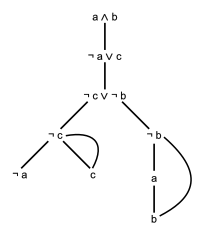
Photo from wikipedia
Characterization of the functional relationship between sensory inputs and neuronal or observers' perceptual responses is one of the fundamental goals of systems neuroscience and psychophysics. Conventional methods, such as reverse… Click to show full abstract
Characterization of the functional relationship between sensory inputs and neuronal or observers' perceptual responses is one of the fundamental goals of systems neuroscience and psychophysics. Conventional methods, such as reverse correlation and spike-triggered data analyses are limited in their ability to resolve complex and inherently nonlinear neuronal/perceptual processes because these methods require input stimuli to be Gaussian with a zero mean. Recent studies have shown that analyses based on a generalized linear model (GLM) do not require such specific input characteristics and have advantages over conventional methods. GLM, however, relies on iterative optimization algorithms and its calculation costs become very expensive when estimating the nonlinear parameters of a large-scale system using large volumes of data. In this paper, we introduce a new analytical method for identifying a nonlinear system without relying on iterative calculations and yet also not requiring any specific stimulus distribution. We demonstrate the results of numerical simulations, showing that our noniterative method is as accurate as GLM in estimating nonlinear parameters in many cases and outperforms conventional, spike-triggered data analyses. As an example of the application of our method to actual psychophysical data, we investigated how different spatiotemporal frequency channels interact in assessments of motion direction. The nonlinear interaction estimated by our method was consistent with findings from previous vision studies and supports the validity of our method for nonlinear system identification.
Journal Title: Journal of vision
Year Published: 2017
Link to full text (if available)
Share on Social Media: Sign Up to like & get
recommendations!